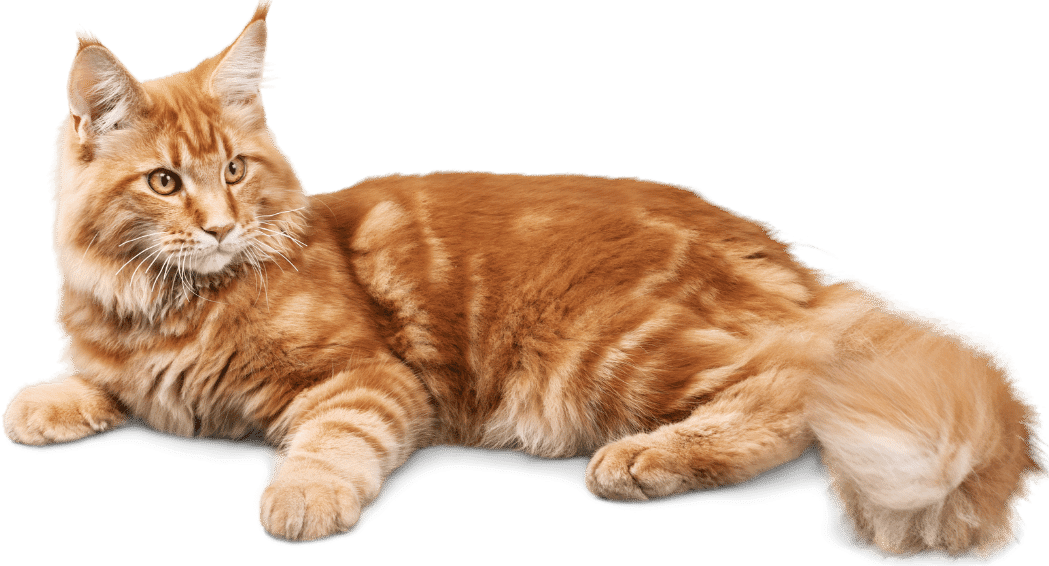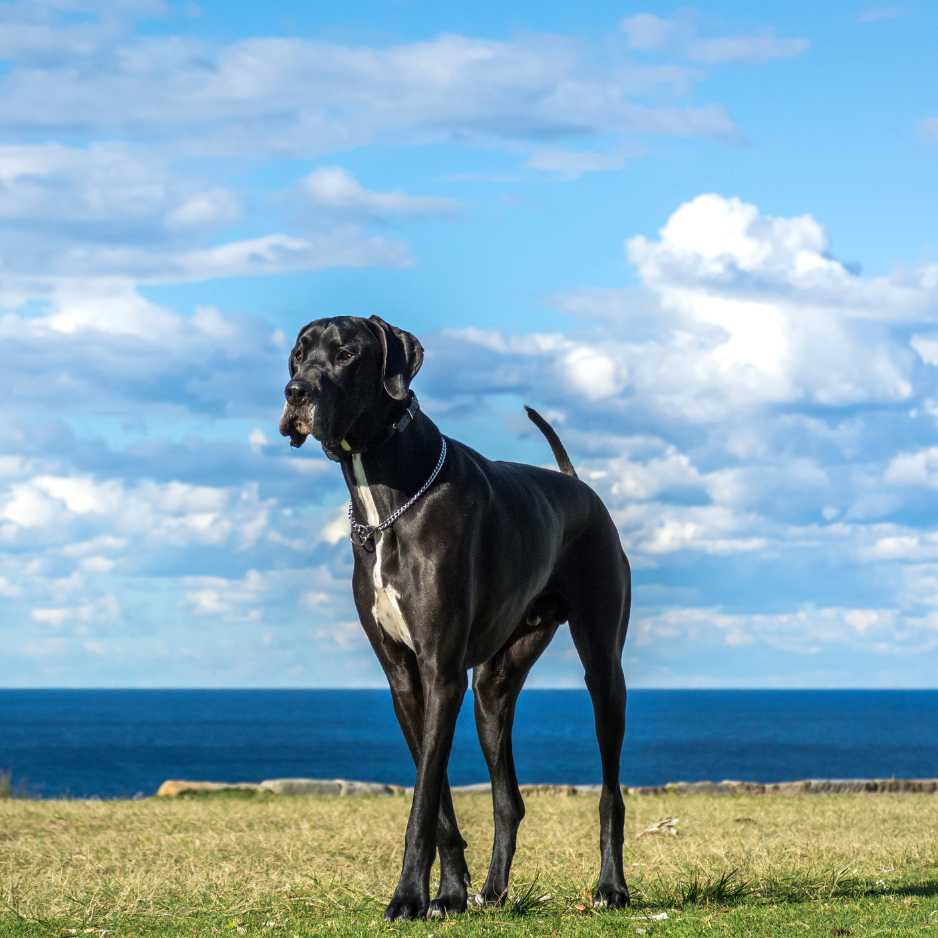The Great Dane is one of the most majestic and awe-inspiring dog breeds in the world. Known for their large size, gentle temperament, and elegant demeanor, these dogs have earned the nickname “Gentle Giants.” Despite their imposing size, Great Danes are incredibly affectionate, loyal, and loving companions. If you’ve ever wondered whether a Great Dane is the right dog for you, this comprehensive guide will cover everything you need to know—from their history and care to their unique qualities and health concerns.
History of the Great Dane
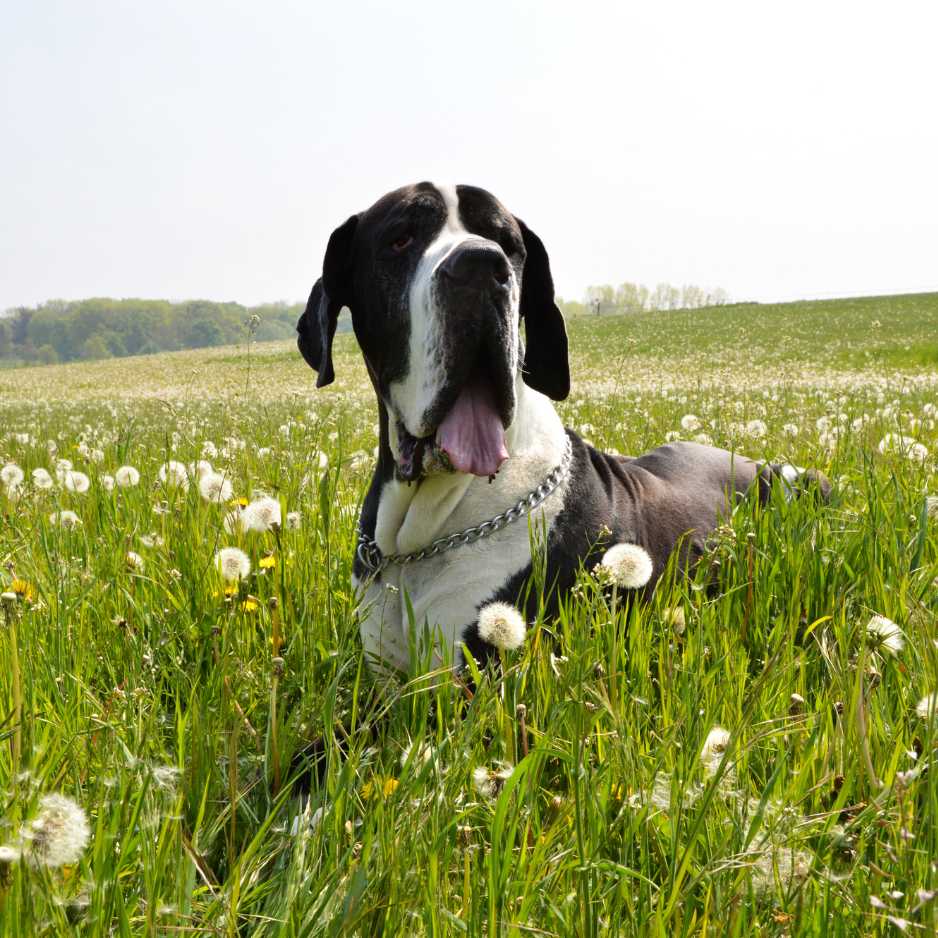
Great Danes have a rich history dating back over 400 years. While many associate the breed with Denmark, Great Danes were actually bred in Germany. They were originally known as “Boar Hounds” and were used to hunt wild boars. Their large size and strength made them ideal for this purpose. As time went on, they transitioned from hunting dogs to companions of the elite in European nobility.
Development in Germany
In the 16th century, German nobility bred Great Danes to be both protectors and companions. These dogs were not only used for hunting but also served as estate guard dogs. Their stature and presence made them formidable protectors, while their gentler side earned them a place inside the royal courts. By the 18th century, the breed began to take on the name we know today: Great Dane or Deutsche Dogge in German.
Recognition and Popularity
The breed was officially recognized by the American Kennel Club (AKC) in 1887, and it has since gained global popularity. Today, the Great Dane is cherished for its gentle demeanor, loyalty, and stunning appearance.
Physical Characteristics of Great Danes
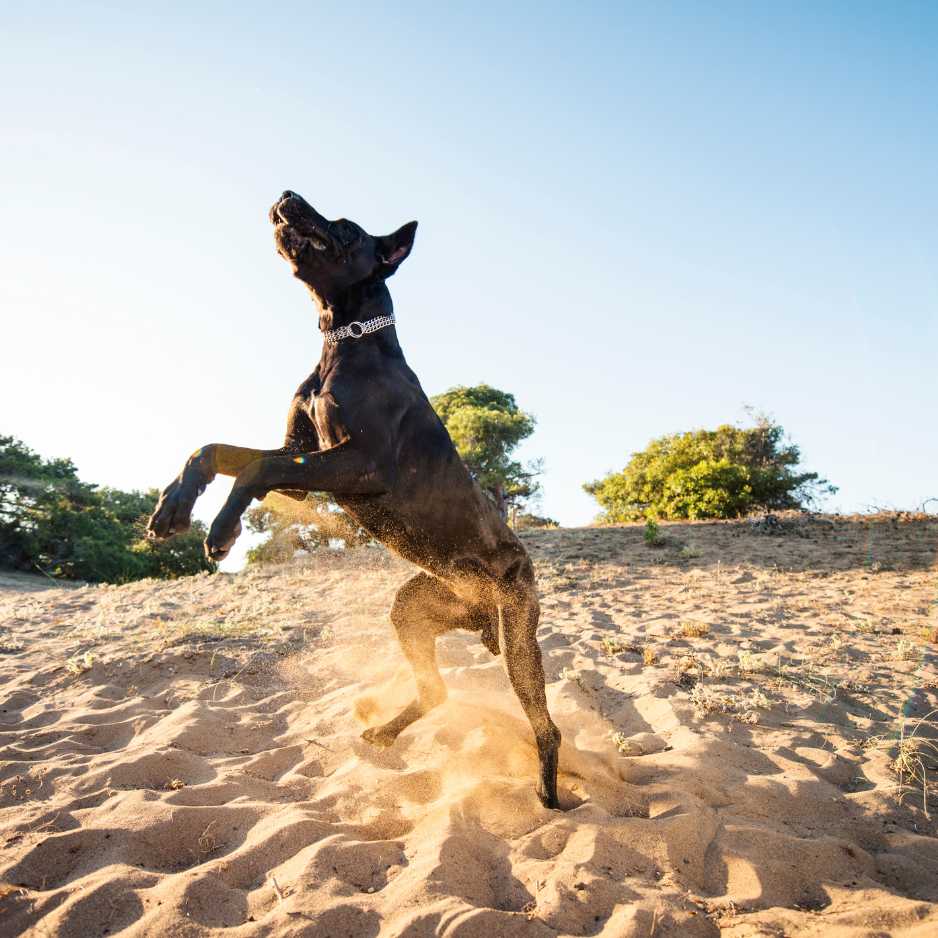
Great Danes are instantly recognizable due to their towering height and muscular build. They are one of the tallest dog breeds in the world, often earning the title of “world’s largest dog.” While their size can be intimidating, their calm and loving nature makes them ideal family pets.
Size and Weight
- Male Great Danes can stand between 30-34 inches tall at the shoulder and weigh between 120-200 pounds.
- Female Great Danes are slightly smaller, standing at 28-32 inches and weighing 100-130 pounds.
Despite their large size, Great Danes are known for their grace and elegance.
Coat and Colors
Great Danes have a short, smooth coat that requires minimal grooming. They come in a variety of colors:
- Fawn: Light tan with a black mask
- Brindle: Fawn and black striped
- Blue: Solid steel-blue coat
- Black: Solid black coat
- Harlequin: White with irregular black patches
- Mantle: Black with a white chest and legs
Life Expectancy
Great Danes, like many large breeds, have a shorter lifespan compared to smaller dogs. On average, they live between 7-10 years, though with proper care, some may live longer.
Great Dane Temperament and Personality
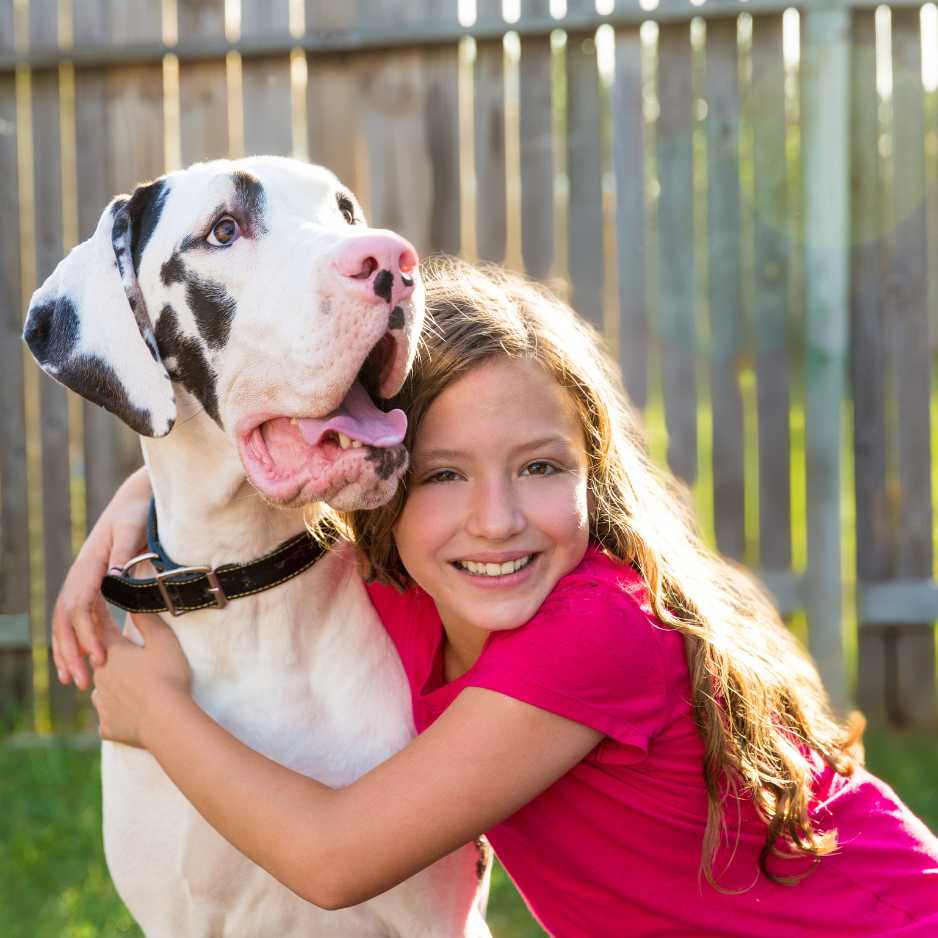
Known as “Gentle Giants,” Great Danes are one of the most affectionate and loyal dog breeds. Their size may be imposing, but their temperament is quite the opposite. Great Danes are known to be calm, patient, and good-natured, making them excellent family dogs.
Gentle with Children
Great Danes are particularly good with children, showing patience and tolerance. Despite their size, they are aware of their surroundings and often become protective over young family members. However, due to their large size, supervision is necessary around very small children to prevent accidental knocks or falls.
Good with Other Pets
Great Danes tend to get along well with other pets, especially if they are raised together. Their easy-going and non-aggressive nature makes them ideal companions for multi-pet households. However, early socialization is essential to ensure they are comfortable around different animals.
Guard Dog Instincts
While Great Danes are not typically aggressive, their size and deep bark make them excellent deterrents for potential intruders. They are naturally protective of their families and homes without being overly territorial or aggressive.
Health and Common Issues in Great Danes
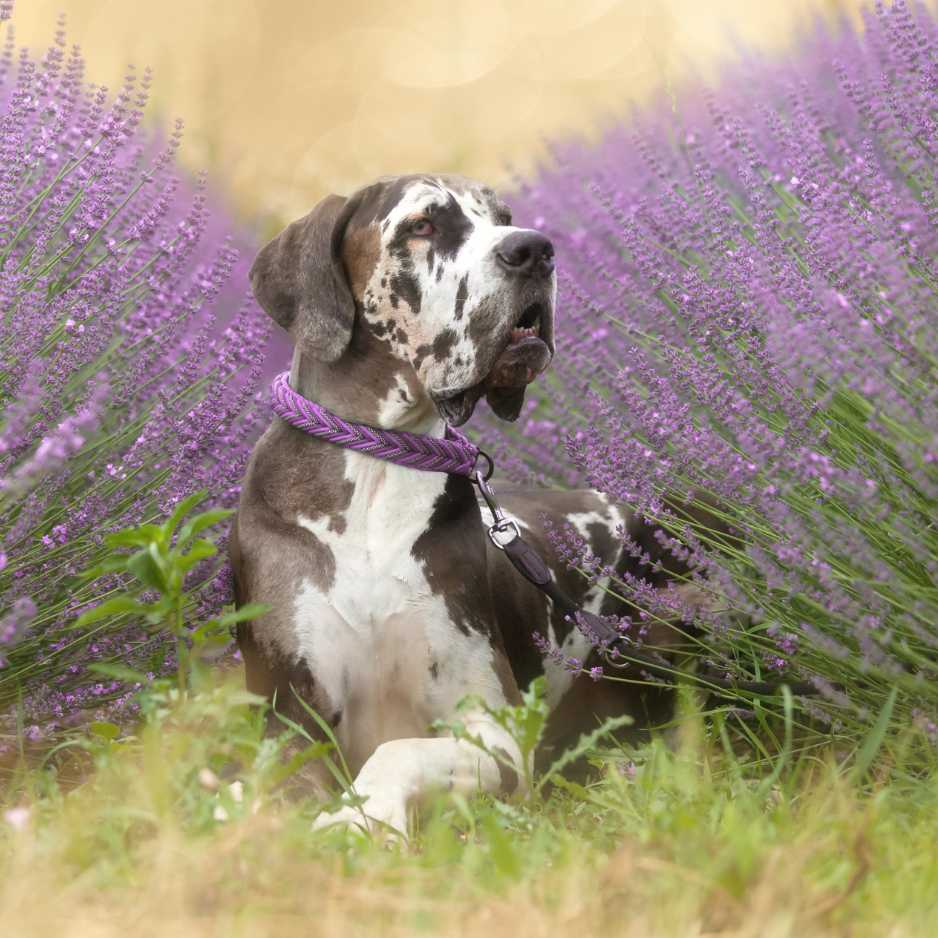
Due to their large size, Great Danes are prone to several health conditions that potential owners should be aware of. Regular vet visits, a balanced diet, and an understanding of their specific needs can help maintain their health.
Common Health Problems:
- Hip Dysplasia: This condition occurs when the hip joint doesn’t develop properly, causing arthritis and pain over time. It’s common in large dog breeds like Great Danes.
- Bloat (Gastric Dilatation-Volvulus): A life-threatening condition where the stomach twists and fills with gas. It is especially common in Great Danes, given their deep chests.
- Cardiomyopathy: This is a heart condition where the heart muscle weakens, affecting its ability to pump blood properly.
- Arthritis and Joint Issues: Due to their size, Great Danes often experience joint problems as they age.
- Eye Problems: Great Danes can be prone to conditions like cataracts or entropion, where the eyelids roll inward.
How to Maintain Their Health
To keep your Great Dane healthy:
- Schedule regular vet check-ups.
- Feed them a balanced diet formulated for large breeds.
- Ensure they get moderate exercise to keep their weight in check and avoid stress on their joints.
- Consider joint supplements, especially as they age, to promote healthy bones and joints.
Feeding and Nutrition for Great Danes
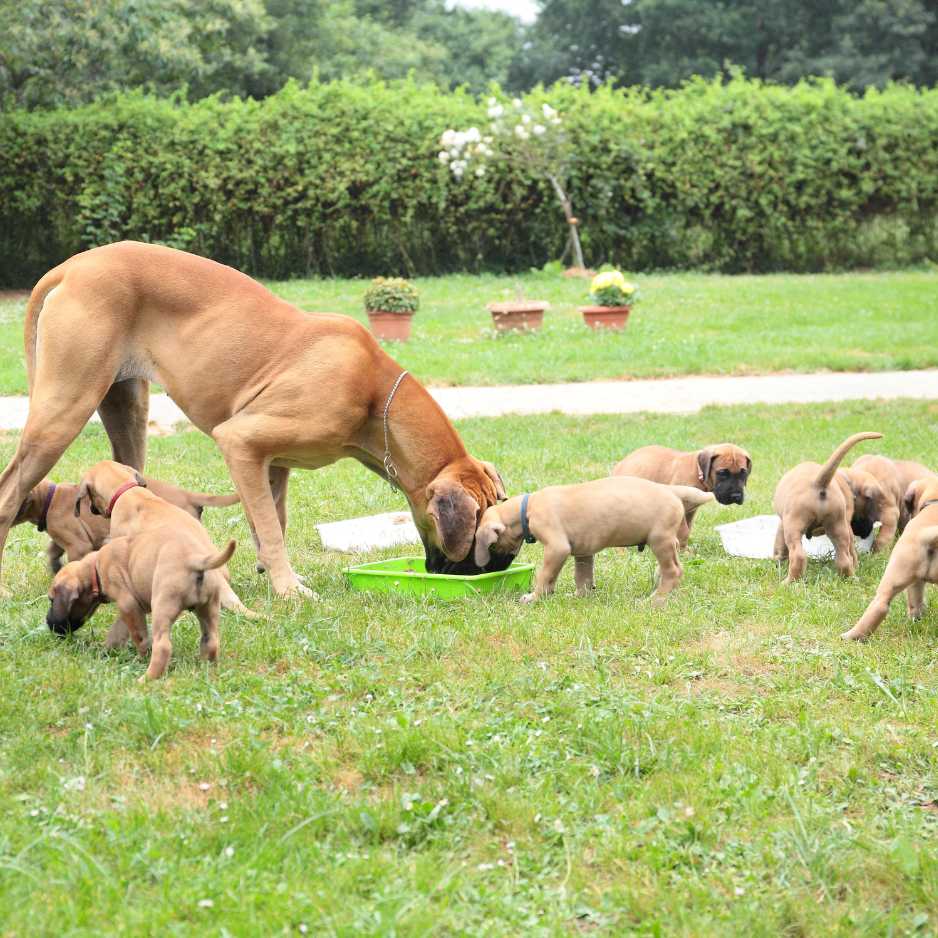
A well-balanced diet is crucial for Great Danes, especially considering their rapid growth and large size. Proper nutrition not only helps them grow but also plays a role in preventing health issues such as joint problems and obesity.
Dietary Needs for Great Danes
Great Danes require high-quality food that supports large-breed growth. Puppy food should be formulated for large breeds to control growth and prevent issues like hip dysplasia.
How Much Should You Feed a Great Dane?
On average, adult Great Danes consume 6-10 cups of food per day, depending on their size, activity level, and age. Puppies need smaller, more frequent meals to ensure they are growing properly without gaining excessive weight.
Avoid Overfeeding
Overfeeding can lead to obesity, which puts unnecessary strain on the joints and heart. Additionally, because of their susceptibility to bloat, it’s best to feed Great Danes smaller meals spread out throughout the day.
Exercise Requirements for Great Danes
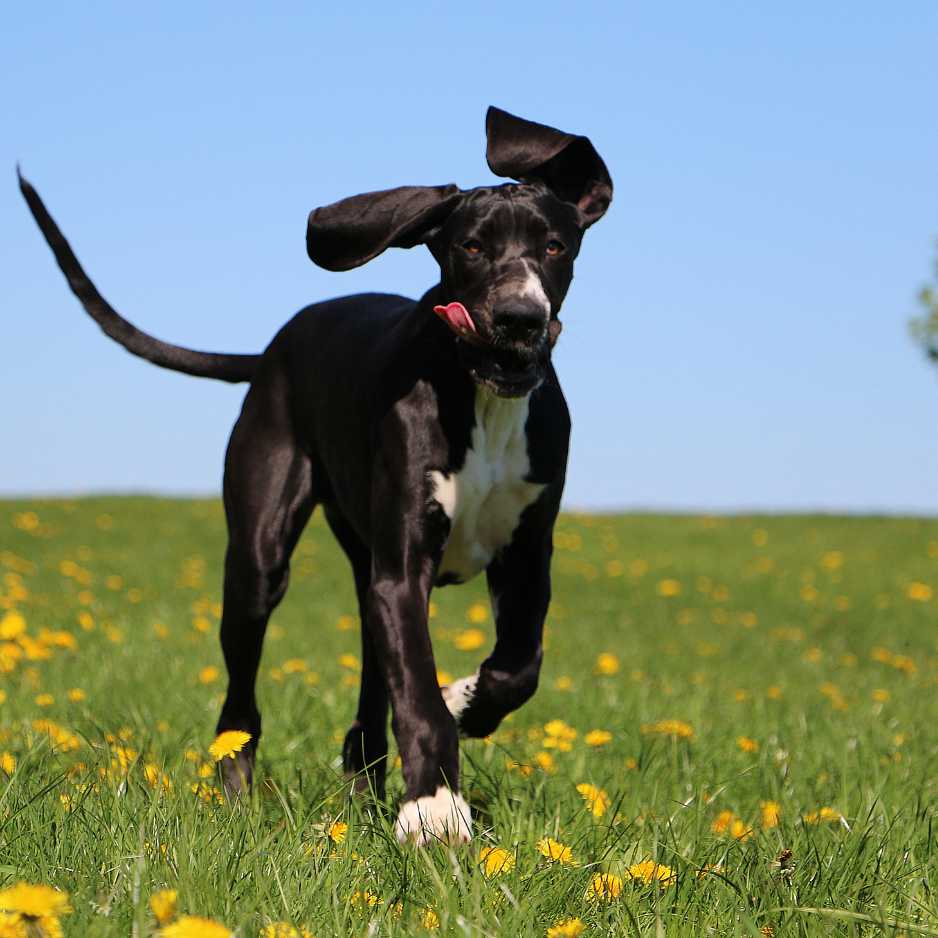
Despite their size, Great Danes do not require excessive exercise. However, they do need regular, moderate activity to stay healthy.
Recommended Exercise
- Daily Walks: Two 30-minute walks with dog harness per day are ideal for Great Danes.
- Low-Impact Activities: Avoid overly strenuous activities like running or jumping, especially for puppies, as this can harm their developing bones and joints.
Mental Stimulation
Great Danes are intelligent dogs that thrive on mental stimulation. Training sessions, puzzle dog toys, and interactive play are excellent ways to keep their minds engaged and prevent boredom-related behaviors.
Grooming and Care for Great Danes
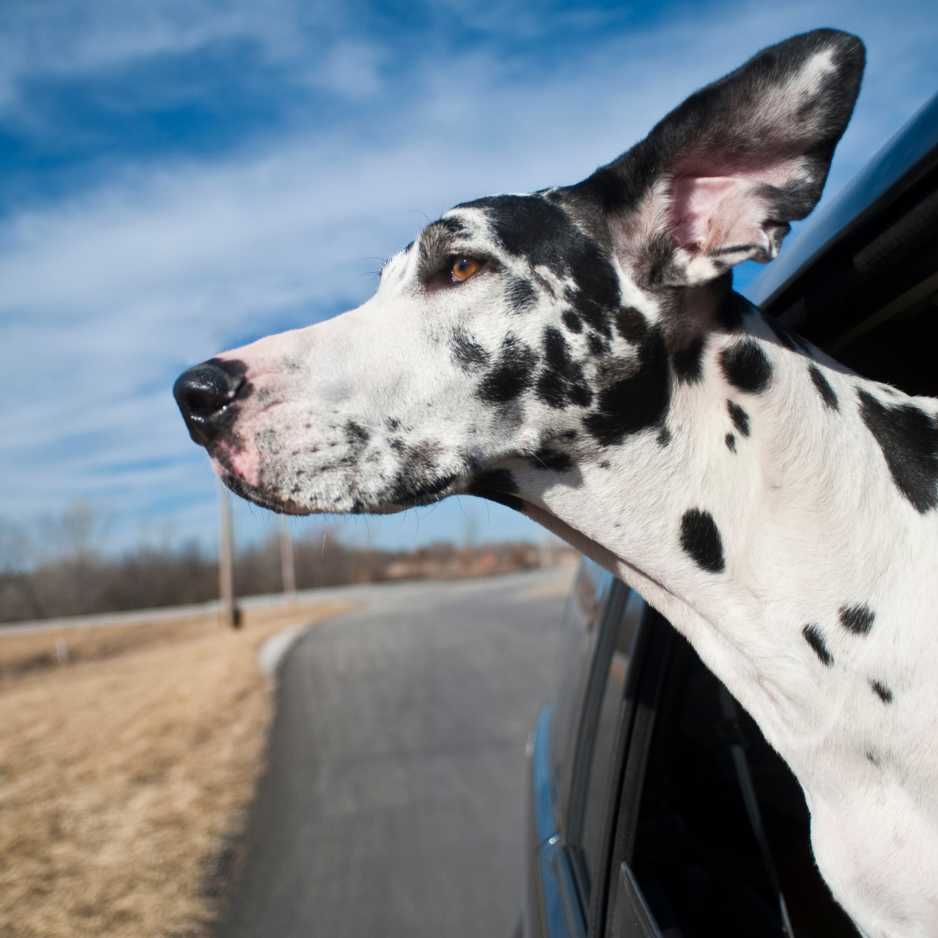
Great Danes are relatively low-maintenance when it comes to grooming, but regular care is still essential to keep them looking and feeling their best.
Coat Care
Due to their short coat, Great Danes only need to be brushed once or twice a week to remove loose fur and keep their skin healthy.
Nail Trimming and Dental Care
Keep dog nails trimmed to prevent discomfort, and brush their teeth regularly to avoid dental problems. Because of their size, their nails can grow quickly, so frequent checks are necessary.
Bathing
Great Danes don’t need frequent baths, but a bath every couple of months is recommended. Use a gentle dog shampoo to prevent drying out their skin.
Training a Great Dane
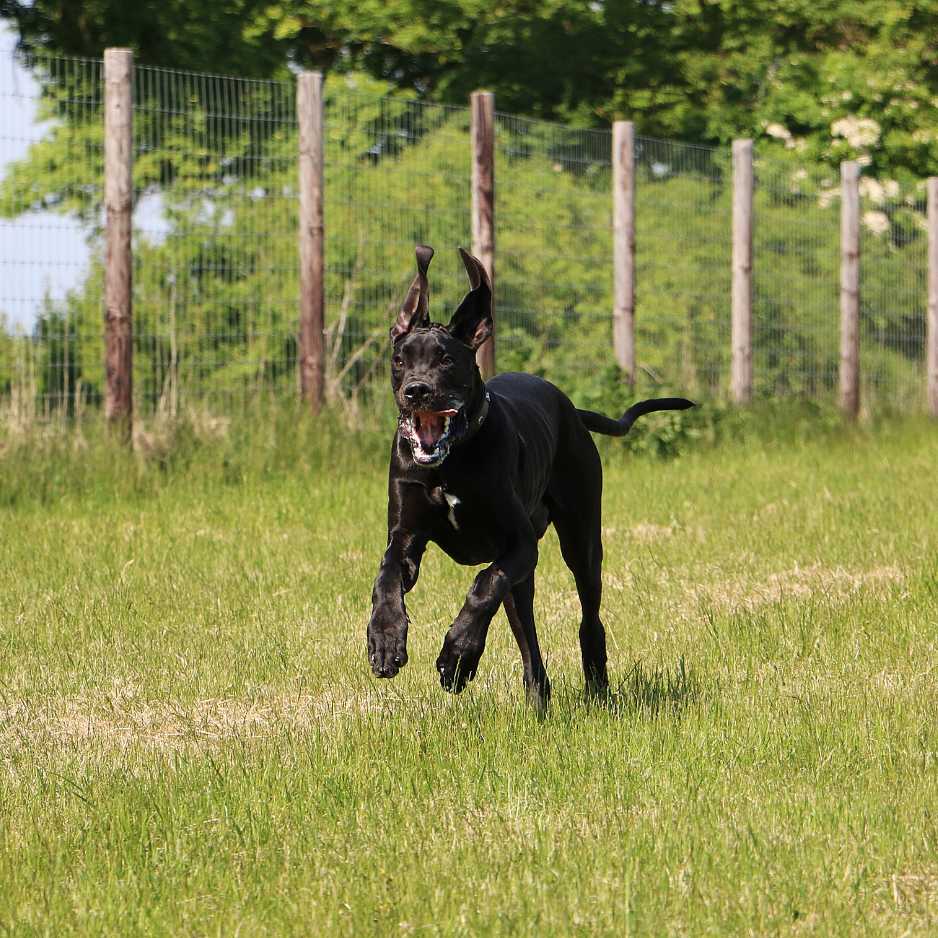
Training is critical for Great Danes due to their large size. Proper training ensures they are well-mannered and manageable in different environments.
Early Socialization
Expose your Great Dane to a variety of environments, people, and animals when they are young to ensure they are well-socialized and comfortable in different situations.
Obedience Training
Start obedience training as early as possible. Great Danes are intelligent and respond well to positive reinforcement, so use treats and praise to encourage good behavior.
Leash Training
Because of their size, leash training is essential. Teaching them to walk calmly on a leash from a young age will prevent pulling and make walks more enjoyable.
Conclusion: Is a Great Dane the Right Dog for You?

If you’re looking for a loyal, gentle, and loving companion who will be a true family member, the Great Dane may be the perfect dog for you. However, their size, health needs, and exercise requirements make them better suited for families that have the space, time, and financial ability to care for them.
In summary, Great Danes are unique, gentle giants with an incredible combination of affection and strength. They can thrive in a family environment, but it’s essential to understand their needs and be prepared for the commitment of caring for such a large breed.
FAQs About Great Danes
Are Great Danes good with children?
Yes, they are incredibly gentle and patient with children, making them excellent family dogs.
How much exercise does a Great Dane need?
They need moderate exercise, about 30-60 minutes per day, including walks and low-impact activities.
How much does a Great Dane eat?
An adult Great Dane eats around 6-10 cups of food per day, depending on their size and activity level.
Do Great Danes shed a lot?
They shed a moderate amount, but regular brushing will help manage their shedding.
How long do Great Danes live?
The average lifespan of a Great Dane is 7-10 years.


